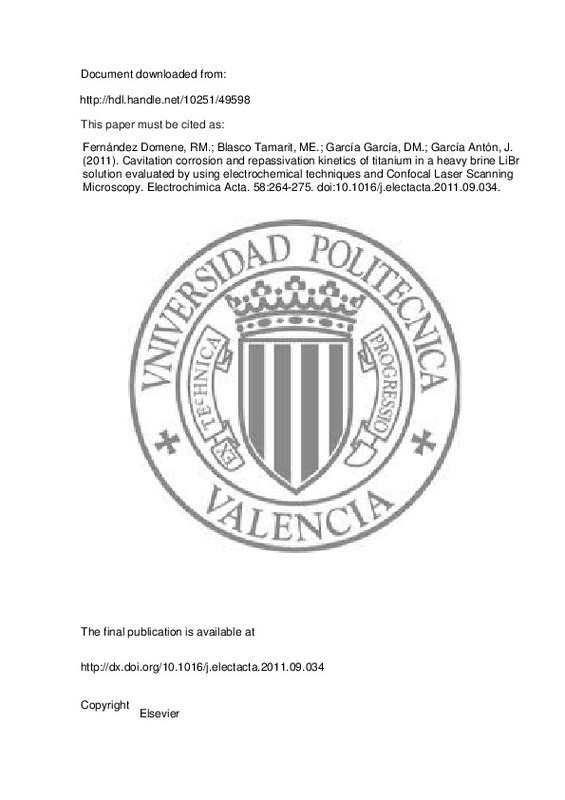JavaScript is disabled for your browser. Some features of this site may not work without it.
Buscar en RiuNet
Listar
Mi cuenta
Estadísticas
Ayuda RiuNet
Admin. UPV
Cavitation corrosion and repassivation kinetics of titanium in a heavy brine LiBr solution evaluated by using electrochemical techniques and Confocal Laser Scanning Microscopy
Mostrar el registro completo del ítem
Fernández Domene, RM.; Blasco Tamarit, ME.; García García, DM.; García Antón, J. (2011). Cavitation corrosion and repassivation kinetics of titanium in a heavy brine LiBr solution evaluated by using electrochemical techniques and Confocal Laser Scanning Microscopy. Electrochimica Acta. 58:264-275. https://doi.org/10.1016/j.electacta.2011.09.034
Por favor, use este identificador para citar o enlazar este ítem: http://hdl.handle.net/10251/49598
Ficheros en el ítem
Metadatos del ítem
| Título: | Cavitation corrosion and repassivation kinetics of titanium in a heavy brine LiBr solution evaluated by using electrochemical techniques and Confocal Laser Scanning Microscopy | |
| Autor: | ||
| Entidad UPV: |
|
|
| Fecha difusión: |
|
|
| Resumen: |
The cavitation corrosion behaviour of commercially pure Grade 2 titanium in a 992 g/l LiBr solution has been investigated at 25 °C using an ultrasound device. Cavitation was found to have more influence on the anodic branch ...[+]
|
|
| Palabras clave: |
|
|
| Derechos de uso: | Reserva de todos los derechos | |
| Fuente: |
|
|
| DOI: |
|
|
| Editorial: |
|
|
| Versión del editor: | http://dx.doi.org/10.1016/j.electacta.2011.09.034 | |
| Código del Proyecto: |
|
|
| Agradecimientos: |
We wish express our gratitude to the Ministerio de Ciencia e Innovacion (Project CTQ2009-07518), for the economical support of this research, to the Generalitat Valenciana for its help in the CLSM acquisition (MY08/ISIRYM/S/100), ...[+]
|
|
| Tipo: |
|







![[Cerrado]](/themes/UPV/images/candado.png)


